If you’re planning on avoiding flying and taking your car to Europe for essential travel, please make sure you know the rules and regulations for driving in your chosen countries.
The first thing you should check is the official Foreign Office travel advice guidance for all countries you set to visit or are driving through. Make sure you check both in good time and again just before you leave. This is due to the shifting situation regarding the Coronavirus (COVID-19) pandemic. This is especially true given that you may end up having to quarantine when you return to the UK – or quarantine when you arrive overseas.
Driving in Europe isn’t as simple as hopping on the ferry and hoping for the best; each country will have specific laws and tight penalties for you to be aware of. From the equipment, you need to take with you, to individual emissions regulations for different cities, make sure you know what to expect when you are driving abroad.
Let’s not forget the Brexit situation…
At the time of writing, the Government is still working on the Brexit deal, so we’re still unsure what impact leaving the EU will have on UK drivers taking their car abroad or hiring one. In 2021, you might need a different International Driving Permit (IDP) – if there is no deal, you might need additional documentation as well.
Keep up to date with what documentation you need for driving in Europe by checking back when we know more about Brexit. You can also check out further info on the gov.uk website.
Speeding fines in Europe
Research from breakdown providers Green Flag suggests 81% of British drivers abroad aren’t aware of the potential £640 fine you could face if caught speeding in Europe due to new EU laws. The research also showed that 61% of people surveyed can’t correctly convert km/h (kilometres per hour) into mph (miles per hour).
Converting from km/h to mph
All are approximate, but should serve as a useful guide:
• 50km/h – 30mph
• 70km/h – 45mph
• 80km/h – 50mph
• 90km/h – 55mph
• 100km/h – 60mph
• 110km/h – 65mph
• 130km/h – 80mph
Insurance for driving in Europe
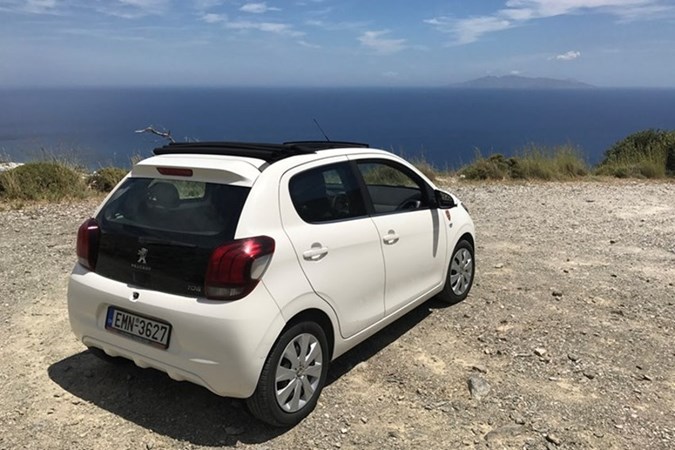
Before you head off on your holiday, you need to go through your insurance policy and check all the details and small print.
You will probably be insured to drive abroad by your provider. However, your policy might stipulate that this cover falls from fully comprehensive to the limited cover needed for the country you’re in – often just third party.
As well as the type of cover, you will need to make sure you are sorted for the length of your trip. Some companies provide 90 days’ cover abroad, while others might do 60 or 30. This will obviously cover a two-week breakaway, but some come with cover for as little as three days, so you might have to pay for additional days.
Remember that your camera isn’t just useful for happy holiday snaps. If you have an accident, make sure you take pictures of the damage as this will make it easier to try and claim on your insurance
Breakdown cover for driving abroad
Make sure that whatever level of breakdown cover you have will be valid if something happened to your car outside the UK. Without adequate cover, getting a broken-down car home could cost you a lot of money, with some stories claiming it cost into the thousands to get the stranded motor home.
Always check any rules about breakdowns for the country you are travelling to; for instance, in France you aren’t allowed to phone your own breakdown company, instead, you have to use one of the orange emergency phones. Read more about breakdowns while driving in France.
What do I need for driving in Europe?
Always carry your driving licence with you, and if you still have the old-style paper counterpart, take that too.
As well as your driving licence, you will also need to make sure that you have all your documents for your car, so don’t forget your V5C registration document. You can get a translated version of this called the International Certificate for Motor Vehicles.
Take your original V5C document, not just a photocopy, where possible.
International Driving Permits
In many foreign countries it is a legal requirement to have an International Driving Permit (IDP) – visit the AA website for the full list of countries.
You can get an IDP from the Post Office; it costs £5.50 and lasts for 12 months. Visit the Post Office website for more details.
Always make sure you carry your UK licence as well as your IDP.
Do I need an International Driving Permit for driving in Europe?
For many European countries, and all EU states, your UK licence should be adequate, but having an IDP as well can give you additional peace of mind.
Headlights when driving in Europe
If you are off to Europe, then you will have to adjust the headlight beam pattern to suit right-hand driving so that you don’t dazzle other drivers. You will need to check with your dealer or handbook to see if the lights can be altered.
If this can’t be done, then you can buy converter kits (in the form of stickers, which cost less than £10) to put on your lights in order to make sure they meet the legal requirement.
Easily convert your car to avoid dazzling other drivers at night. Simply stick these on your headlights and they divert your headlight beam for safer driving. This kit is fully reversible and reusable too.
Essential buy: AA Car Headlight Beam Converters, RRP £8.79 – Amazon.co.uk
Penalties and on-the-spot fines when driving abroad
Cross-Border Enforcement means if you commit a speeding offence in any EU country, your licence details are available to the authorities in the country the offence was committed. So don’t assume that because you’re abroad, the authorities can’t access your details and chase you for a fine.
Penalties and on-the-spot fines vary from country to country. In France, for instance, some police authorities can impose and collect on-the-spot fines of up to €750. Read more about penalties driving in France.
Speed camera detectors when driving in Europe
If you have a device that locates speed cameras, it’s probably best to leave this at home when driving abroad. They are illegal in some European countries and you could face a €1,500 fine – even if it’s turned off. The device might be confiscated and they could even take your car. Having the software as an app on your phone could also see them take your phone away.
What safety kit should I carry in my car?
Many European countries require you to carry warning triangles and reflective jackets in the car with you at all times and to always wear a reflective jacket if you have an accident. Some European countries require your high-vis to be in the car with you, so for safety, just leave one in each door pocket per passenger plus driver.
In some countries, you could face large fines for not carrying this equipment. Check the specific requirements for the country you are travelling to.
Parkers – Equipment you’ll need for driving abroad
AA Euro Travel Kit
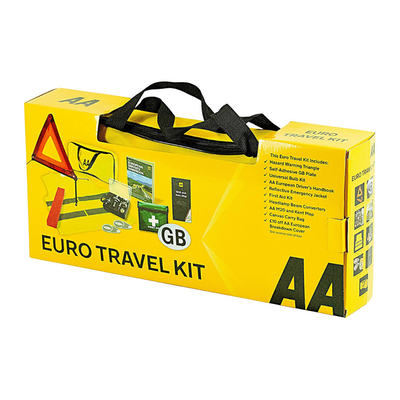
Price: £32 | VIEW OFFER
With everything you’re legally required to have for European driving, this offering from the AA is a great choice if this is your first time driving in Europe. Just remember that an additional breathalyser is required for driving in France.
First Aid Kit

Price: £23.55 | VIEW OFFER
A common-sense item to carry at any time, a first aid kit is something that will provide invaluable when driving in Europe. This particular product is a 210-piece set and can help with almost any minor injury.
Warning Triangle
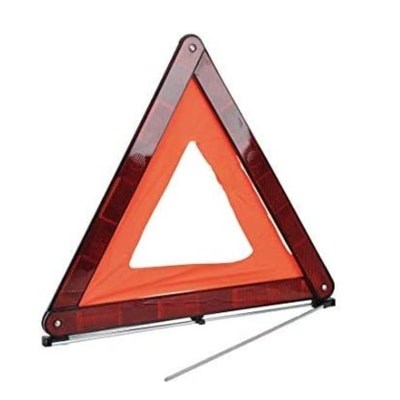
Price: £7.25 | VIEW OFFER
This warning triangle will help you in the event of a breakdown. With convenient storage cases and made of robust materials, these triangles are a quality purchase.
AA High Visibility Vest
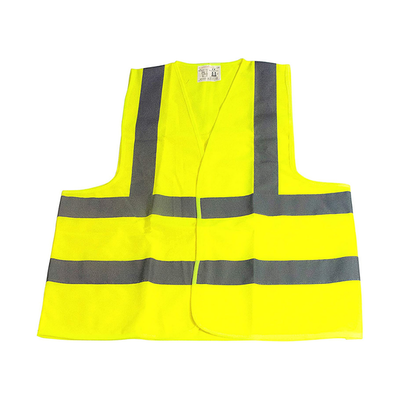
Price: £5.93 | VIEW OFFER
This high-visibility vest from the AA will ensure that you are clearly visible in the event of a crash. Built to conform to EU regulations, a high vis vest is advisable to carry around at all times, not just when driving abroad.
Low Emission Zones
This works in a similar way to the London Congestion charge where the most polluting vehicles are regulated in some way – they are either banned or charged for entering the zones.
More than 180 cities and towns in 10 European countries have the zones or are set to launch them.
Some cities, such as Paris, Lyon, and Grenoble in France, and a whole host of cities in Germany, require your car to have special emission stickers. Check the specific requirements for the cities you’ll be visiting to make sure you’re not caught out and fined – for instance, in the French cities mentioned, failure to have a clean air sticker could result in a fine of €68 for light vehicles, and €135 for heavy goods vehicles.
Motorway tolls and vignettes when driving in Europe
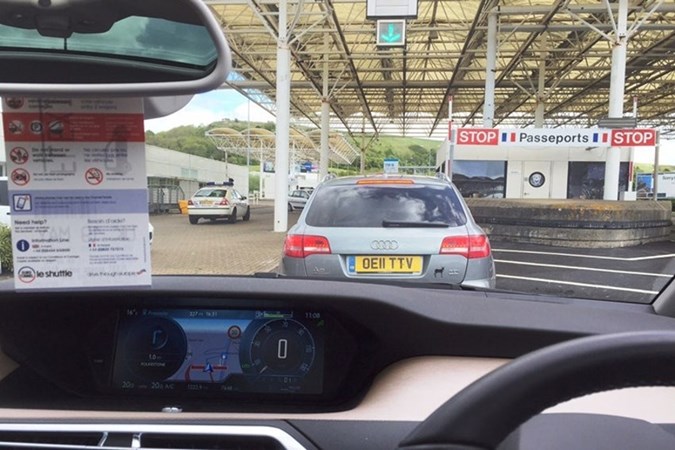
Some European countries require tolls on certain roads, meaning you need a ‘vignette’ or special sticker in your car. Other countries simply require payment at toll booths. There’s a useful list of requirements for individual countries on the Caravan Club website.
GB stickers for driving in Europe
Since March 2001, Euro registration plates that include the GB-Euro symbol have been legal across the EU and means that you don’t have to bother with a GB sticker on the car – according to the latest advice from the AA, this will remain the case after 2020.
But if your car doesn’t have the symbol on your number plate, you will have to display the sticker otherwise you could be hit by an on-the-spot fine.
These GB magnetic stickers will attach to any metal panel on your car and ensure your car doesn’t land a nasty fine. Be careful, however, as these will not stick to plastic or glass panels.
Essential buy: AA Magnetic GB Sticker – £4.99
Sign up to the Parkers Newsletter to keep up to date with more of the latest reviews, news, and recommendations from the Parkers team.
Just so you know, whilst we may receive a commission or other compensation from the links on this page, we never allow this to influence product selections – read why you should trust us.
Just so you know, we may receive a commission or other compensation from the links on this website - read why you should trust us.




